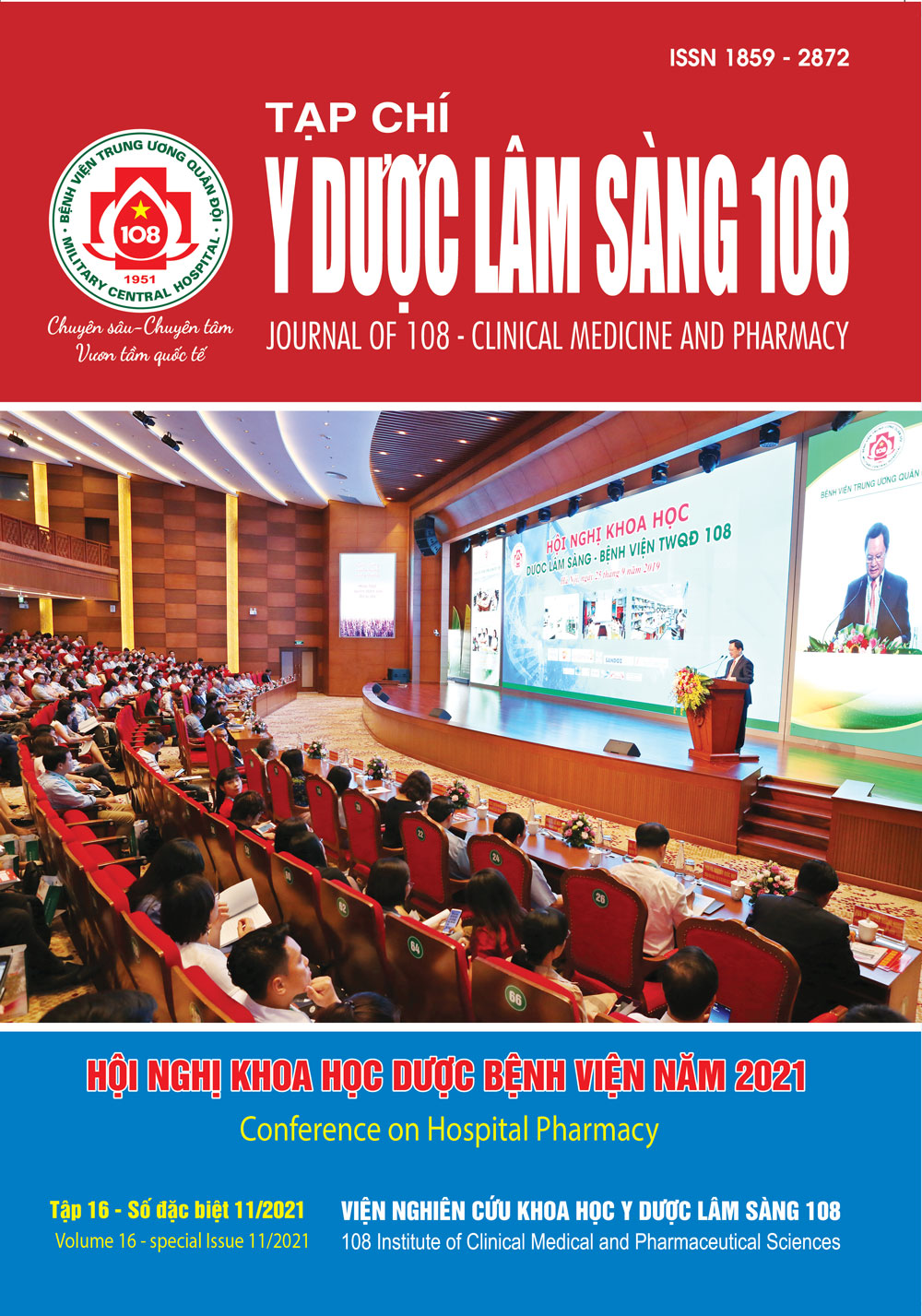Investigation of antibiotic prophylaxis use in surgical patients in Friendship Hospital
Main Article Content
Keywords
Abstract
Objective: To evaluate the appropriate use of antibiotics before and after issuance of local antimicrobial surgical prophylaxis guideline. Subject and method: A before-after study was conducted in patients with clean or clean-contaminated surgery in Friendship Hospital, which compared surgical prophylaxis antibiotic use before and after the issuance of local guideline. The criteria which were compared between two periods included: Indication, choice, dosing, time of administration, redosing, duration, overall appropriateness. Result: Totally 82 surgeries were enrolled, of which 100% of patients classified as clean or clean-contaminated surgery were prescribed surgical prophylaxis antibiotics. After issuing guideline, the proportion of appropriate antibiotic choice, time of administration and dosing regimen had increased significantly (p<0.05). However, the duration of antibiotic use was still prolonged, with median of 7 days in both periods. The percentages of adherence to all criteria before and after guideline issuance were 2.4% and 24.3% (p<0.05), respectively. None of the patients in both periods were diagnosed with surgical site infections. Conclusion: The study showed that the proportion of appropriate prophylactic antibiotic use improved significantly after local guideline was issued, specifically with antimicrobial choice, dosing and time of administration criteria. In addition, duration of antimicrobial use was still prolonged, indicating that more strategies would be implemented to effectively managing antibiotics use in surgery patients at the hospital.
Article Details
References
2. Bộ Y tế (2012) Hướng dẫn phòng ngừa nhiễm khuẩn vết mổ.
3. Chi Trần Lan Chi (2018) Khảo sát tình hình sử dụng kháng sinh dự phòng phẫu thuật tại Bệnh viện Vinmec Times City. Khóa luận tốt nghiệp dược sĩ, Trường Đại học Dược Hà Nội.
4. Agodi A, Barchitta M et al (2015) Appropriate perioperative antibiotic prophylaxis: Challenges, strategies, and quality indicators. Epidemiologia e prevenzione 39(4-1): 27-32.
5. Ansari S, Hassan M et al (2019) Risk factors associated with surgical site infections: A retrospective report from a developing country. Cureus 11(6): 4801.
6. Bratzler DW, Dellinger EP et al (2013) Clinical practice guidelines for antimicrobial prophylaxis in surgery. American journal of health-system pharmacy: AJHP: Official journal of the American Society of Health-System Pharmacists 70(3): 195-283.
7. Cabana MD, Rand CS et al (1999) Why don't physicians follow clinical practice guidelines? A framework for improvement. JAMA 282(15): 1458-1465.
8. Ierano C, Thursky K et al (2019) Influences on surgical antimicrobial prophylaxis decision making by surgical craft groups, anaesthetists, pharmacists and nurses in public and private hospitals. PLoS ONE 14(11): 0225011.
9. Shabanzadeh DM, Sorensen LT (2012) Laparoscopic surgery compared with open surgery decreases surgical site infection in obese patients: A systematic review and meta-analysis. Annals of surgery 256(6): 934-945.
10. Zhou L, Ma J et al (2016) Optimizing prophylactic antibiotic practice for cardiothoracic surgery by pharmacists' effects. Medicine 95(9): 2753.
11. Dale W Bratzler, Patchen Dellinger E et al (2013) Clinical practice guidelines for antimicrobial prophylaxis in surgery. American Journal of Health-System Pharmacy 70(3): 195-283.
 ISSN: 1859 - 2872
ISSN: 1859 - 2872
